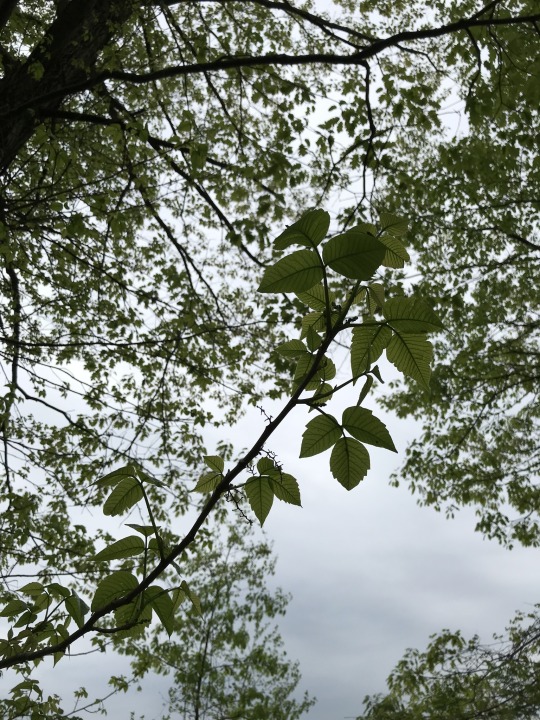
Watch out for poison ivy! It is a fascinatingly cool plant but can also be dangerous. This flowering specimen of poison ivy was collected on May 31, 1903 by John Shafer (the first curator of botany at Carnegie Museum) and O.P. Medsger in the Laurel Highlands of southwestern PA.

What is Poison Ivy?
Poison ivy (Toxicodendron radicans) is a woody vine found in forest understories, but does especially well on forest edges. It is very common in urban and suburban areas. It takes many forms, climbing high up a tree, along the ground, or even a short shrubby thing. The leaves take a range of shapes, but as the adage goes (“leaves of 3, let it be”), it has three leaflets.

Poison Ivy Chemistry – What Causes the Rash?
Poison ivy is known for its chemistry, producing a class of organic compounds call urushiol. These are found in the plant’s sap and on leaves/stems/roots. Urushiol causes a nasty rash to those who touch it. Not all people have a reaction (but most are sensitive). Don’t be too confident if you haven’t had a rash before – it can develop with repeated exposure. Incredibly itchy, the rash can become a serious health issue if infected, especially if its oils get in contact with your eyes, face, or throat. The rash can appear days after exposure and can last for weeks.

Research indicates poison ivy will get more poisonous with climate change, both in terms of growth and producing higher quantities of forms of urushiol particularly toxic to humans.
Is Poison Ivy a Weed?
Some people call Poison ivy because of its fear-causing rash, but it is native to eastern North America. The species has a wide distribution across our region, and across the world (native subspecies in China). Although native, the species seems to be getting more common as we create more forest edge habitat. The colorful foliage can be quite beautiful in the fall, and the berries are a food source for birds and other animals. Humans seem to be the only ones allergic to it.


Plants Similar to Poison Ivy
Poison ivy is often confused with other non-poisonous and poisonous plants.
Some common confusions:
- Virginia creeper (Parthenocissus quinquefolia), a vine in the grape but different leaves, and not with leaves of three
- Box elder maple (Acer negundo), a tree that has compound leaves unlike most stereotypical maples, but with samaras (aka “helicopter” seeds)
Poison ivy and some other rash-causing plants are in the cashew family (Anacardiaceae) – which also includes poison oak (not found in Pennsylvania, but in western USA), staghorn sumac (not rash causing), poison sumac (rash causing, but you likely won’t come across it unless in very wet habitats)….and even a few familiar species like pistachio, cashew, and mango (some people are allergic).
What an amazing plant.
This specimen image is now publicly available online: http://midatlanticherbaria.org/portal/collections/individual/index.php?occid=12232529&clid=0
Check back for more! Botanists at the Carnegie Museum of Natural History share digital specimens from the herbarium on their collection dates. They have embarked on a three-year project to digitize nearly 190,000 plant specimens collected in the region (like Poison ivy!) making images and other data publicly available online. This effort is part of the Mid-Atlantic Megalopolis Project (mamdigitization.org), a network of thirteen herbaria spanning the densely populated urban corridor from Washington, D.C. to New York City to achieve a greater understanding of our urban areas, including the unique industrial and environmental history of the greater Pittsburgh region. This project is made possible by the National Science Foundation under grant no. 1801022.
Mason Heberling is Assistant Curator of Botany at the Carnegie Museum of Natural History. Museum employees are encouraged to blog about their unique experiences and knowledge gained from working at the museum.
